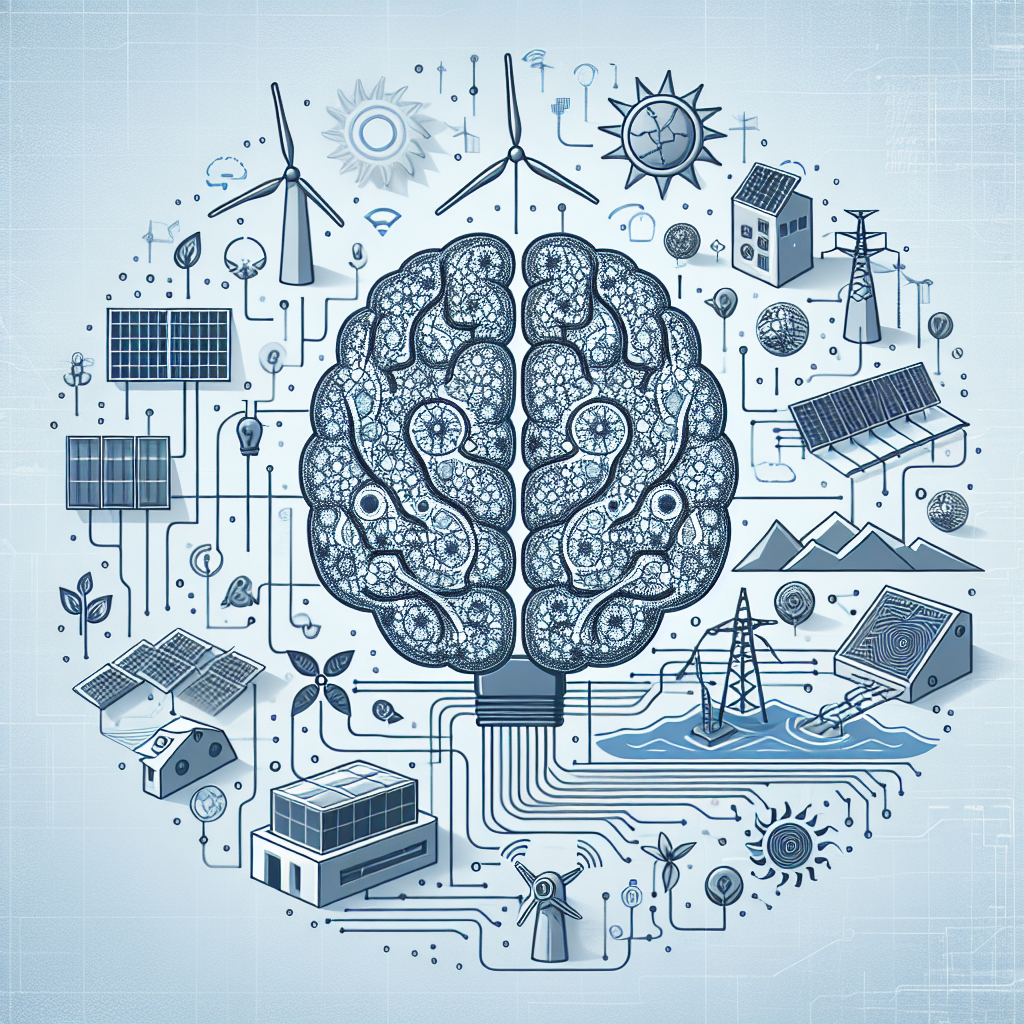Using AI to Optimize Renewable Energy Production
In recent years, renewable energy sources such as solar and wind power have become increasingly popular as a way to reduce our reliance on fossil fuels and combat climate change. However, one of the challenges that renewable energy faces is its intermittency – the fact that the sun doesn’t always shine and the wind doesn’t always blow. This can make it difficult to rely solely on renewable energy sources to meet our energy needs.
However, artificial intelligence (AI) is emerging as a powerful tool that can help optimize renewable energy production and overcome some of these challenges. By using AI algorithms to analyze data and predict energy production, renewable energy systems can be made more efficient and reliable. In this article, we will explore how AI is being used to optimize renewable energy production and the potential benefits it can bring.
1. Predictive Maintenance
One of the key ways in which AI is being used to optimize renewable energy production is through predictive maintenance. By using AI algorithms to analyze data from sensors and monitoring systems, renewable energy operators can predict when equipment is likely to fail and take preventative action before it does. This can help reduce downtime and ensure that renewable energy systems are operating at maximum efficiency.
For example, AI can be used to analyze data from wind turbines to predict when components such as bearings or gearboxes are likely to fail. By replacing these components before they break down, operators can avoid costly repairs and downtime. Similarly, AI can be used to analyze data from solar panels to predict when they are likely to degrade and need maintenance. By taking preventative action, operators can ensure that their solar panels are operating at peak efficiency.
2. Energy Forecasting
Another way in which AI is being used to optimize renewable energy production is through energy forecasting. By analyzing data such as weather patterns, energy demand, and historical energy production, AI algorithms can predict how much energy will be produced by renewable energy sources in the future. This can help energy operators better plan for fluctuations in energy production and ensure that they are able to meet demand.
For example, AI can be used to predict how much solar energy will be produced on a given day based on factors such as cloud cover and the position of the sun. This information can then be used to determine how much energy needs to be stored in batteries or how much energy needs to be purchased from the grid. Similarly, AI can be used to predict how much wind energy will be produced based on factors such as wind speed and direction. This information can then be used to determine how much energy needs to be stored or how much energy needs to be curtailed.
3. Grid Optimization
AI can also be used to optimize the integration of renewable energy sources into the grid. By analyzing data such as energy demand, energy production, and grid constraints, AI algorithms can help operators determine the most efficient way to distribute energy from renewable sources. This can help reduce energy waste, lower costs, and improve the reliability of the grid.
For example, AI can be used to predict when energy demand will be highest and adjust the output of renewable energy sources accordingly. This can help reduce the need for expensive backup power plants and ensure that energy is being used efficiently. Similarly, AI can be used to optimize the routing of energy through the grid to minimize losses and ensure that energy is delivered where it is needed most.
4. FAQs
Q: How accurate are AI energy forecasts?
A: The accuracy of AI energy forecasts depends on the quality of the data used and the sophistication of the algorithms. In general, AI energy forecasts can be quite accurate, especially when they are based on detailed data such as weather patterns and historical energy production.
Q: How much can AI help optimize renewable energy production?
A: AI has the potential to significantly optimize renewable energy production by improving predictive maintenance, energy forecasting, and grid optimization. By using AI algorithms to analyze data and make decisions in real-time, renewable energy systems can be made more efficient and reliable.
Q: What are the challenges of using AI to optimize renewable energy production?
A: One of the main challenges of using AI to optimize renewable energy production is the complexity of the systems involved. Renewable energy systems can be highly variable and depend on a wide range of factors, making it difficult to create accurate models. Additionally, AI algorithms require large amounts of data to train, which can be difficult to obtain for renewable energy systems.
In conclusion, AI is emerging as a powerful tool that can help optimize renewable energy production and overcome some of the challenges that renewable energy faces. By using AI to improve predictive maintenance, energy forecasting, and grid optimization, renewable energy operators can make their systems more efficient and reliable. As AI technology continues to advance, we can expect to see even greater benefits in the optimization of renewable energy production.

